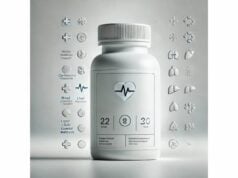
Magnesium threonate (often labeled as magnesium L-threonate or “Magtein”) is a specialty form of magnesium bound to L-threonic acid, a vitamin C metabolite. It’s best known for its potential brain-related advantages. Early research suggests it may support aspects of memory, attention, mood, and sleep quality, with growing human trials complementing decades of magnesium science. Unlike more common salts aimed at muscles or digestion, magnesium threonate is formulated to deliver magnesium to the nervous system efficiently. It contains comparatively little elemental magnesium per gram, so smart label reading matters. When used thoughtfully—at appropriate doses, with attention to interactions, and as part of a broader sleep, stress, and nutrition plan—magnesium threonate can be a practical option for people prioritizing cognitive resilience and restorative sleep. This guide explains what it is, how it works, who may benefit, how to use it safely, how it compares to other forms, and what the evidence really shows.
Essential Insights
- May modestly improve aspects of cognition or sleep quality in some adults; benefits appear within 1–4 weeks in studies.
- Typical daily intakes supply 100–200 mg elemental magnesium, which equals about 1.3–2.7 g magnesium threonate.
- Start low (≈500–1,000 mg compound at night), increase gradually, and keep total supplemental magnesium ≤350 mg elemental/day unless medically advised.
- Avoid if you have significant kidney disease; separate by 2–4 hours from antibiotics, thyroid medicine, and bisphosphonates.
Table of Contents
- What is magnesium threonate and how does it work?
- What benefits can you realistically expect?
- How to use it: forms, timing, and practical tips
- How much magnesium threonate per day?
- Side effects, interactions, and who should avoid it
- What the research says so far
What is magnesium threonate and how does it work?
Magnesium threonate is a magnesium salt of L-threonic acid, the latter being a breakdown product of vitamin C. The “threonate” portion acts as a carrier that helps the salt dissolve well in water and, according to preclinical and pharmacokinetic data, may support delivery of magnesium ions to the central nervous system. In practical terms, the magnesium is the bioactive mineral; threonate is the paired molecule that influences how the mineral is absorbed, distributed, and tolerated.
Why magnesium matters: This mineral participates in hundreds of enzymatic reactions, including energy (ATP) production, DNA and RNA synthesis, and regulation of ion channels and neurotransmission. In neurons, adequate magnesium helps balance excitatory (glutamate) and inhibitory (GABA) signaling, supports plasticity (the brain’s ability to rewire), and steadies stress responses. Low intake or low tissue magnesium can show up as muscle cramps, migraines, irritability, poor sleep, or impaired attention—though symptoms are non-specific and overlap with many conditions.
What’s unique about threonate: All magnesium salts ultimately release Mg²⁺ ions, but different salts vary in solubility, fraction of elemental magnesium, and how they affect the gut or tissues. Threonate is notable for two reasons:
- Nervous system targeting. Preclinical work shows that magnesium threonate can raise magnesium levels within brain tissue more effectively than several other forms. That mechanistic hint aligns with human findings where the outcomes measured were cognition, mood, or sleep rather than bowel motility or muscle relaxation.
- Lower elemental magnesium per gram. Compared with magnesium oxide or citrate, magnesium threonate delivers fewer milligrams of elemental magnesium per gram of compound—roughly in the 70–85 mg elemental per gram range depending on brand and hydration state. That means a label listing “2,000 mg magnesium L-threonate” typically corresponds to only about 140–170 mg elemental magnesium. This is not a drawback; it simply means dosing is expressed in grams of the compound when planning your regimen.
How the body handles it: After ingestion, magnesium threonate dissociates; magnesium ions enter circulation and are taken up by cells and (to a modest extent) into cerebrospinal fluid, while threonic acid is metabolized and excreted. Blood magnesium is tightly regulated, so everyday blood tests can be normal even when intracellular or brain levels differ. That’s one reason some trials look at functional outcomes (memory tests, sleep metrics) rather than relying solely on serum magnesium.
Who tends to consider it: Adults seeking cognitive support (focus, working memory, learning), people with demanding mental workloads, midlife and older adults noticing subjective forgetfulness, and individuals with non-clinical sleep complaints. It is not a treatment for neurodegenerative disease or psychiatric disorders; any suspected medical condition warrants clinician evaluation first.
Bottom line: Magnesium threonate is engineered for brain-first applications. If your priority is regularity or cramp prevention, a different salt (e.g., citrate, glycinate) may suit you. If your priority is cognition or sleep quality, threonate is a reasonable evidence-informed choice when used safely.
What benefits can you realistically expect?
Claims around magnesium threonate cluster into four areas—cognition, attention/mental energy, mood/stress, and sleep. Here’s what a balanced reading of the evidence suggests for each, along with realistic timelines and effect sizes.
Cognition (memory, executive function). In adults with subjective cognitive complaints or mild impairment, formulations centered on magnesium threonate have shown improvements on composite cognitive scores over 6–12 weeks. In healthy adults, changes tend to be subtler and domain-specific (e.g., working memory or processing speed) and may be more noticeable under mental fatigue. Expect any cognitive benefits to emerge gradually, often after 2–8 weeks, and to be modest—helpful nudges rather than dramatic transformations.
Attention and daytime mental clarity. By stabilizing neural signaling and cellular energy, magnesium can reduce “brain fog” in people who were borderline deficient or under chronic stress. People often describe easier task switching or less mental friction in the afternoon. If you already meet magnesium needs and sleep well, gains may be minimal.
Mood and stress reactivity. Magnesium participates in HPA-axis regulation (the stress response), and suboptimal intake correlates with higher anxiety symptoms in observational research. In trials using magnesium threonate as the source, small improvements in mood and calmness have been observed, usually alongside sleep improvements. Again, effects are small to moderate and accrue with consistent intake.
Sleep quality. Among the more practical benefits, a three-week randomized trial found improved objective sleep stages (deep/REM) and subjective next-day functioning with 1,000 mg/day of magnesium threonate in adults with self-reported sleep problems. Participants didn’t necessarily fall asleep faster; rather, they reported feeling more refreshed and alert. Expect changes within 1–3 weeks when they occur.
Headaches or muscle tension. Magnesium generally helps some individuals with migraine prevention or muscle cramps, but studies typically use other salts (citrate, oxide, glycinate). Threonate may still help if your cramps or headaches are related to stress, sleep loss, or low magnesium status, but it hasn’t been the primary form studied for those indications.
Who benefits most. Individuals with low dietary magnesium (common in Western diets), high stress, suboptimal sleep, or midlife cognitive concerns are most likely to notice benefits. People with robust magnesium intake, excellent sleep, and no cognitive complaints may experience little to no change.
Realistic expectations. Think of magnesium threonate as a foundational micronutrient strategy with targeted emphasis on the nervous system, not a performance drug. Combine it with proven pillars—consistent sleep timing, daylight exposure, physical activity, and a magnesium-rich diet (leafy greens, legumes, nuts, whole grains)—to amplify gains. If you try it, track two or three specific outcomes (e.g., time to mental fatigue, recall of names, next-day energy) weekly for 8–12 weeks before judging.
How to use it: forms, timing, and practical tips
Read labels carefully. Supplement labels often list both “magnesium L-threonate” (the compound) and “magnesium (elemental).” The latter is what contributes to your daily magnesium total and to the tolerable upper intake from supplements. As a rule of thumb, every 1,000 mg of magnesium threonate yields roughly 70–85 mg of elemental magnesium, depending on brand and hydration state.
Capsules vs. powders. Capsules are convenient and help with consistent dosing; powders or drink mixes can be useful if you want a smaller, sip-able evening dose. Choose third-party tested products (e.g., USP, NSF, Informed Choice) to reduce contamination risk and ensure label accuracy.
Timing. For sleep or next-day mental clarity, the common approach is evening dosing, ~1–2 hours before bedtime. For cognitive support during the workday, split the total into two or three doses (morning and late afternoon) to maintain steadier levels while still keeping a portion near bedtime if sleep is a goal. Consistency matters more than clock precision.
With food or empty stomach? Magnesium threonate is usually well tolerated either way. If you notice mild nausea, take it with a snack. If you’re using it near bedtime, avoid very heavy, high-fat meals that can delay gastric emptying and disrupt sleep.
Stacking (what to combine, what to avoid).
- Pairs sensibly with lifestyle interventions (regular exercise, daylight exposure) and basic nutrients that many people under-consume (magnesium-rich foods, omega-3s).
- If you already take another magnesium salt (e.g., glycinate for relaxation or citrate for regularity), consider whether you need both. Many people do well with a single form; if combining, ensure your total elemental magnesium from supplements remains appropriate.
- Be careful stacking with sedatives, high-dose melatonin, or alcohol; you may feel overly groggy or notice sleep fragmentation.
- If you use creatine, taurine, or L-theanine, there’s no known adverse interaction; some users find complementary effects on mental stamina or calm focus.
Monitoring. There’s no widely accessible test that reflects brain magnesium. Standard serum magnesium can flag frank deficiency but misses subtler deficits. If you’re experimenting for cognition or sleep, track outcomes that matter to you (e.g., an executive function app task, a 1–10 alertness score at 3 p.m., a weekly sleep quality rating, or Oura/WHOOP metrics if you already use them). Reassess after 8–12 weeks.
Special cases.
- Athletes with high sweat losses may still prefer magnesium citrate/glycinate for muscle and gut needs, adding threonate optionally at night.
- Shift workers can anchor dosing to their sleep episode, taking it ~1–2 hours before the sleep period, not by clock time.
- Perimenopausal adults with sleep disruption may find evening magnesium threonate synergizes with light hygiene and temperature control strategies.
Quality and safety. Choose reputable brands and avoid “proprietary blends” that obscure how much of the dose is true magnesium threonate. Look for transparent disclosure of elemental magnesium per serving. If you’re pregnant, nursing, have kidney disease, or take interacting medications, get clinician guidance before starting.
How much magnesium threonate per day?
Key numbers to understand first.
- Elemental magnesium vs. compound weight: Doses are often listed as grams of magnesium threonate, but the body “sees” the elemental magnesium. Roughly 1,300–2,700 mg/day of magnesium threonate yields ≈100–200 mg/day elemental magnesium.
- Dietary reference intakes: Adults typically need 310–420 mg/day of magnesium from all sources (food + supplements), depending on age and sex. Most adults fall short through diet alone.
- Supplemental upper limit (UL): For adults, 350 mg/day is the tolerable upper intake from supplements and medications (not counting food). Staying at or below the UL minimizes the risk of diarrhea or other GI effects.
Evidence-informed ranges.
- Sleep support: 1,000 mg/day magnesium threonate (~70–85 mg elemental) taken in the evening for 3–4 weeks has improved sleep parameters in adults with self-reported sleep complaints. If well tolerated but insufficient, some people step up to 1,500–2,000 mg/day (≈105–170 mg elemental).
- Cognitive support (healthy adults): 1,500–2,000 mg/day (≈105–170 mg elemental), divided between morning and evening, is commonly used for 8–12 weeks in research on memory and attention.
- Cognitive complaints in midlife/older adults: Protocols in clinical studies have used ≈1,500–3,000 mg/day (≈110–250 mg elemental) for 12 weeks, often within multi-nutrient formulas. If you’re in this group, involve your clinician to tailor dosing and to rule out reversible medical contributors to cognitive symptoms.
How to titrate.
- Week 1: 500–1,000 mg magnesium threonate at night.
- Week 2–3: Add a second 500–1,000 mg dose earlier in the day if needed (stay mindful of total elemental magnesium).
- Weeks 4–8: Maintain; evaluate benefits and side effects.
- Beyond 8–12 weeks: Consider a 1–2 week break or step-down to the lowest effective dose.
Stay within your total magnesium budget. If you already take a multivitamin with 100–200 mg elemental magnesium or a separate magnesium glycinate, calculate your combined total so you remain near or below 350 mg/day from all supplemental sources unless your clinician recommends otherwise.
Who might need less. Smaller individuals, those with lower GI tolerance, or people whose diet already supplies plentiful magnesium may do well with 500–1,000 mg/day (≈35–85 mg elemental). More isn’t necessarily better: once body stores are adequate, extra magnesium is excreted or causes laxation.
Consistency beats intensity. Benefits—when they occur—tend to accrue over weeks. Skipping days and then “catching up” with a large dose is more likely to cause GI upset than benefits.
Side effects, interactions, and who should avoid it
Common, usually mild effects. The most frequent complaint with any magnesium supplement is GI upset—soft stools, transient nausea, or cramping—especially when jumping straight to higher doses or combining multiple magnesium products. Magnesium threonate is generally gentler on the gut than oxide or citrate, but sensitivity varies. Taking it with a small snack and splitting the daily amount can help.
Less common effects. Some users notice increased vivid dreams or a slightly heavier sensation on waking during the first few nights; this often settles within a week. Daytime drowsiness is uncommon at sleep-focused doses but can occur if combined with sedatives or alcohol.
Serious but rare risks (usually at much higher intakes or in susceptible individuals). Excessive supplemental magnesium can cause hypotension, flushing, lethargy, or—at very high levels—cardiac rhythm disturbances. People with kidney impairment are at higher risk because they clear magnesium more slowly. Anyone with significant renal disease should use magnesium only under medical supervision.
Medication interactions (separate by 2–4 hours).
- Antibiotics: Tetracyclines and fluoroquinolones bind to magnesium and are less absorbed if taken together.
- Thyroid hormone (levothyroxine): Magnesium reduces absorption; take thyroid medication on an empty stomach and magnesium later.
- Bisphosphonates: Magnesium can reduce absorption; dose apart.
- Acid reducers and diuretics: Certain diuretics or long-term proton pump inhibitor use can shift magnesium balance—discuss with your clinician.
- Neuromuscular blockers: In surgical settings, magnesium alters sensitivity; disclose supplement use before procedures.
Who should avoid or seek guidance first.
- Kidney disease (moderate to severe).
- Bradycardia or known heart block.
- Pregnant or nursing individuals (safety data for magnesium threonate specifically are limited; standard prenatal care covers magnesium needs).
- Children and adolescents (use only with pediatric guidance).
- People on multiple interacting medications (thyroid, antibiotics, osteoporosis drugs) where timing becomes complex.
Allergies and excipients. Check for capsule ingredients (gelatin vs. vegetarian caps), allergens (soy, gluten), and sweeteners in powders if you’re sensitive.
When to stop and seek care. New or worsening muscle weakness, persistent diarrhea, unusual heartbeat sensations, or swelling warrant prompt medical attention and discontinuation until evaluated.
Smart safety practices. Start low, go slow; track your total supplemental elemental magnesium; separate from interacting medications; and reassess the need every few months. For many users, lower maintenance doses suffice once diet and sleep are on track.
What the research says so far
The big picture. Magnesium as a nutrient has robust evidence for cardiometabolic and neuromuscular roles, but when we zoom into magnesium threonate for brain-first outcomes, the clinical evidence—while encouraging—is still emerging. Recent randomized trials and systematic reviews give us direction, but sample sizes are modest, durations short (3–12 weeks), and some studies involve multi-ingredient formulas or are industry-funded. That doesn’t invalidate findings; it simply argues for cautious, practical expectations and replication.
Sleep quality. A three-week, randomized, double-blind, placebo-controlled trial in adults with non-clinical sleep problems tested 1,000 mg/day of magnesium threonate. Compared with placebo, participants maintained or improved objective sleep parameters (deep and REM sleep measures via wearable) and reported better morning alertness, energy, and productivity. Benefits emerged within 1–2 weeks. Importantly, the study did not show faster sleep onset; its strength was more restorative sleep and next-day function.
Cognitive outcomes.
- In healthy adults, a randomized, double-blind trial in Chinese adults found that a magnesium threonate-based formula improved aspects of cognitive performance over several weeks versus placebo.
- In older adults with cognitive complaints, a 12-week randomized, double-blind trial using a magnesium threonate-centered formulation (MMFS-01) reported significant improvements in a composite cognitive score (large effect size) relative to placebo. Sleep and anxiety outcomes were ambiguous due to strong placebo effects, but cognitive results were noteworthy.
Mechanistic rationale. Preclinical studies show that raising brain magnesium enhances synaptic plasticity and learning and may promote dendritic spine density. Translationally, that maps to outcomes like working memory or processing speed in humans. Threonate’s role is primarily as a carrier that helps deliver magnesium in a brain-relevant manner; once magnesium is in the neuron, the familiar enzymatic and signaling benefits apply.
How much elemental magnesium is in it? A regulatory assessment and clinical reports converge on the idea that magnesium threonate contains low elemental magnesium per gram—on the order of ~70–85 mg/g. That’s why daily totals in trials are often expressed as 1–3 grams of the compound rather than hundreds of milligrams of elemental magnesium. This low fraction is not a flaw; it reflects the compound’s design and good tolerability at the doses used for brain-related endpoints.
Safety and regulatory notes. Magnesium is an essential nutrient with a long safety record at dietary doses. As with other salts, the main supplement-related adverse effect is laxation when intake exceeds individual tolerance. From a regulatory perspective, assessments have concluded that magnesium from magnesium threonate is bioavailable, with proposed adult supplement intakes in the low-gram range corresponding to ≤250 mg/day elemental magnesium—compatible with established upper limits for supplements in healthy adults.
What’s still unknown.
- Long-term effects beyond 3–6 months on cognition or sleep are not well studied.
- Whether magnesium threonate is clearly superior to other well-absorbed forms (e.g., glycinate) for every individual is uncertain; head-to-head trials are scarce.
- The impact in clinical populations (diagnosed insomnia, ADHD, mild cognitive impairment subtypes) needs larger, independent trials with biomarker endpoints.
Practical translation. If your goals are brain-first—smoother focus, less afternoon mental fatigue, more restorative sleep—magnesium threonate is a reasonable first trial within a comprehensive plan. Build a consistent routine, respect medication timing, and give it 8–12 weeks before reevaluating.
References
- Magnesium – Health Professional Fact Sheet 2022.
- Safety of magnesium l‐threonate as a novel food pursuant to regulation (EU) 2015/2283 and bioavailability of magnesium from this source in the context of Directive 2002/46/EC 2024 (Safety Assessment).
- Magnesium-L-threonate improves sleep quality and daytime functioning in adults with self-reported sleep problems: A randomized controlled trial 2024 (RCT).
- Magnesium and Cognitive Health in Adults: A Systematic Review and Meta-Analysis 2024 (Systematic Review).
- Efficacy and Safety of MMFS-01, a Synapse Density Enhancer, for Treating Cognitive Impairment in Older Adults: A Randomized, Double-Blind, Placebo-Controlled Trial 2016 (RCT).
Disclaimer
This article is for educational purposes only and is not a substitute for personalized medical advice, diagnosis, or treatment. Always speak with your physician, pharmacist, or qualified healthcare professional before starting, stopping, or changing any supplement, especially if you are pregnant or nursing, have kidney or cardiovascular disease, or take prescription medications. If you experience adverse effects, discontinue use and seek medical guidance.
If you found this guide helpful, consider sharing it with a friend or posting it on Facebook, X (formerly Twitter), or any platform you prefer. Your support helps us keep creating clear, evidence-informed health articles. Thank you.










